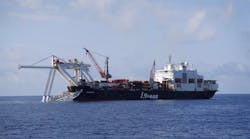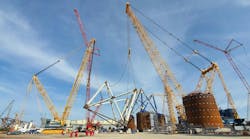Offshore staff
OSLO, Norway – The mid-Norwegian Sea could serve as a subsea storage center for carbon dioxide (CO2), says the Norwegian Petroleum Directorate.
NPD’s new storage atlas, commissioned by the Ministry of Petroleum and Energy, has identified potential sites in the Norwegian Sea that could store 5.5 gigatonnes (6.06 gigatons) of CO2. This would be more than 100 times Norway’s total CO2 discharge last year.
The area surveyed is between 62° and 69°30” North. NPD claims that the Trøndelag platform, including the Nordland ridge, would be best suited for CO2 storage.
Within this region, the Froan basin has uniform Jurassic and Triassic sediments that could be suited to long-distance CO2 migration. The Helgeland basin has large structures on the eastern flank separated by large grabens considered deep enough to act as barriers to fluid flow in the Jurassic aquifers.
On the Nordland ridge, three large structures have been mapped, separated from the hydrocarbon bearing-terraces to the west, and therefore potential CO2 storage sites.
The main objective of the study, aside from identifying safe storage areas, is to avoid possible negative impact on present and future petroleum activities. Storage sites near producing fields could remove and store excess CO2 from produced gas, opening development of fields with high CO2 content.
The study is based on detailed mapping of relevant geological formations and hydrocarbon fields in the Norwegian Sea.
1/28/2013




